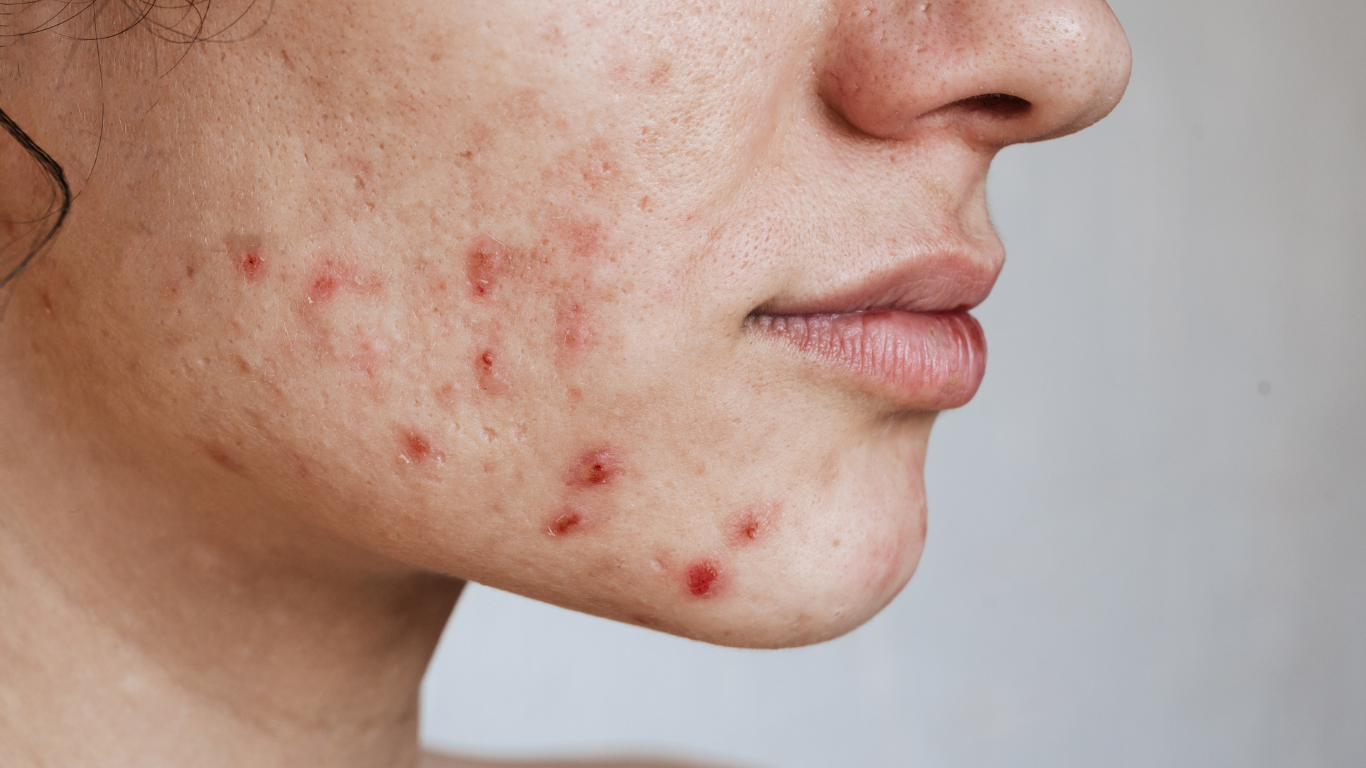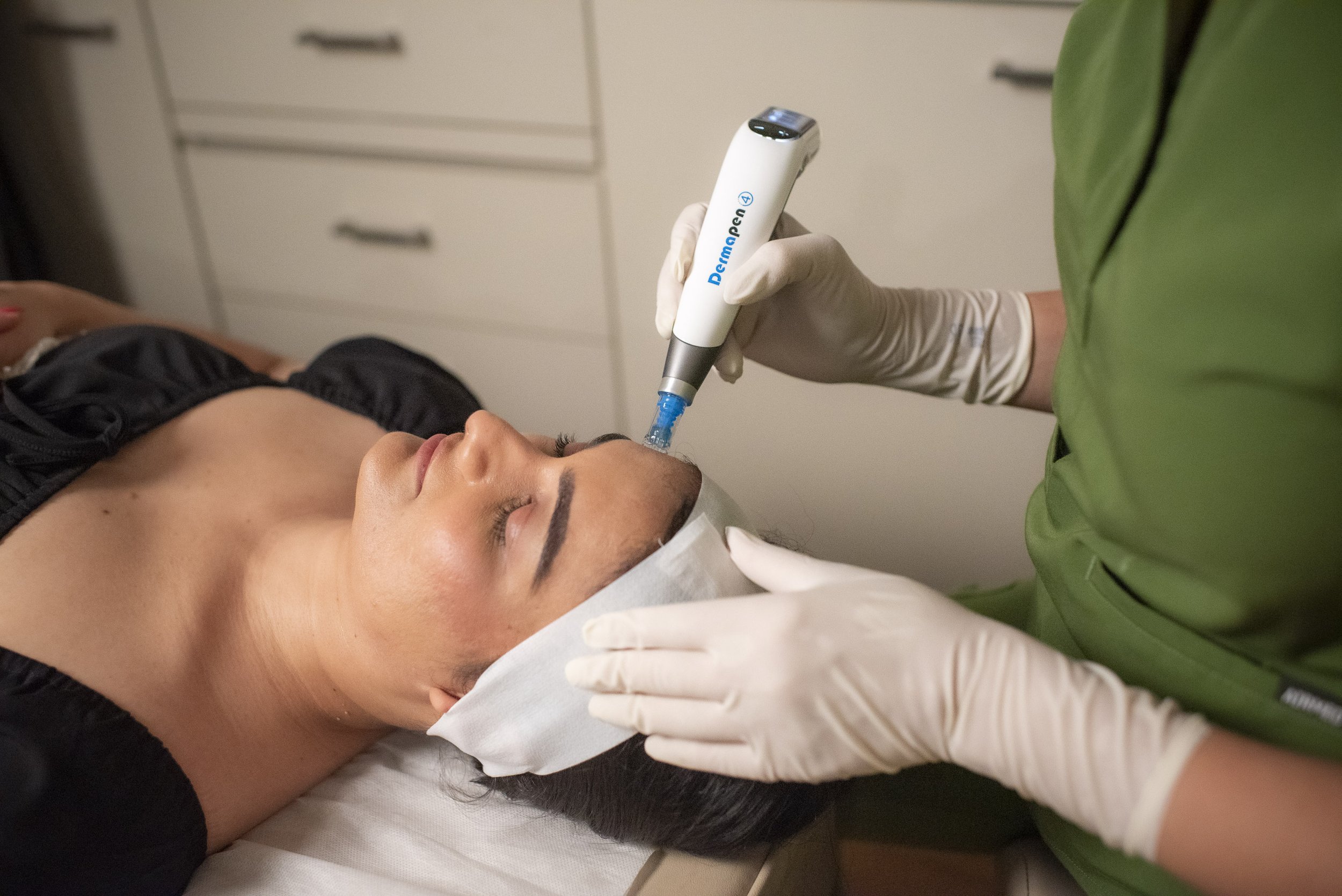
Acne & Different Types of Acnes
Acne
Acne is a skin condition that occurs when your hair follicles become plugged with oil and dead skin cells. It often causes whiteheads, blackheads or pimples and usually appears on the face, forehead, chest, upper back and shoulders.
Acne is most common among teenagers, though it affects people of all ages.
Acne can cause emotional and psychosocial pain and negative impacts on your quality of life, damaging your self-confidence. Treating acne is often a long journey that can take its toll, but we aim to get you to a place where you’re happy with how your skin looks. At Dermaland, effective treatments are available for your Active acne.
Our team will work with you to find the best possible solution for you, diagnosing the type of acne you have.
Type One: Closed comedones, whiteheads, mild blackheads and papules
Type Two: Open comedones and moderate blackheads
Type Three:Pustules and papules
Type Four: Moderate to severe inflammation, pustules and papules
Type Four: Severe inflammation, pustules and papules and cysts
Our skin experts are passionate about improving and controlling your symptoms so you can live without worrying about your skin. We’re here for you every step of the way.
Why am I getting acne on my face?
Several factors contribute to the development of acne:
Excess Sebum Production: Sebum is an oily substance produced by the sebaceous glands in the skin. Excess sebum production can lead to clogged pores, which is a primary factor in the development of acne.
Clogged Hair Follicles: When the hair follicles become clogged with sebum and dead skin cells, it creates an environment where acne-causing bacteria (Propionibacterium acnes) can thrive.
Bacterial Infection: Propionibacterium acne is a type of bacteria that naturally lives on the skin. When the hair follicles become clogged, this bacteria can multiply, causing inflammation and the formation of pimples.
Hormonal Changes: Hormonal fluctuations, which often occur during puberty, pregnancy, menstruation, or when taking certain medications, can increase sebum production and make the skin more prone to acne.
Genetics: Acne can run in families, suggesting a genetic predisposition to the condition. If your parents or siblings had acne, you may be more likely to develop it as well.
Diet: While the role of diet in acne is still a subject of ongoing research, some studies suggest that certain foods, such as high-glycemic-index foods and dairy products, may exacerbate acne in some individuals.
Stress: Stress can trigger hormonal changes that may contribute to acne in some people.
Cosmetic and Hair Products: Certain cosmetics and hair products can clog pores and contribute to the development of acne, especially if they are not non-comedogenic (formulated not to clog pores).
Friction and Pressure: Constant rubbing or pressure on the skin, such as from tight clothing or wearing helmets and backpacks, can worsen acne, a condition known as acne mechanica.
It's important to note that the severity of acne can vary widely, from mild, occasional breakouts to severe, persistent cases. Acne treatments can range from over-the-counter topical products to prescription medications, depending on the severity of the condition. If you're struggling with acne, it's advisable to consult a dermatologist who can provide personalized treatment recommendations based on your specific needs.
Recommended Treatments
LED light therapy is one of the non-invasive skin treatments for acne, sun damage, and rejuvenation treatments. At Dermaland, we use different wavelengths of light to boost the skin’s natural healing processes and repair the skin after some skin treatments.
Dermaplaning is an exfoliation procedure designed to smooth the appearance, reduce fine lines, and reduce acne scarring. The innovative technique carefully removes the top layers of the tissue, ridding the face of the dead skin and ‘peach fuzz’ that can trap in dirt and oils. The procedure will allow for new skin to appear, brightening the complexion.
Microdermabrasion aims to renew overall skin tone and texture. This treatment is gently applied to the skin's surface to eliminate dead skin cells and stimulate the production of new skin cells. The suction additionally enhances follicle oxygenation, reducing bacteria and unclogging pores. This results in skin that feels and appears softer, smoother, and more polished.
Intense Pulsed Light (IPL), is a non-invasive skin treatment that uses broad-spectrum light to target various skin concerns. IPL is used to address a range of skin issues, including sun damage, hyperpigmentation, age spots, freckles, broken blood vessels, rosacea, and certain signs of aging.
Dermapen4 is an advanced collagen induction therapy that stimulates collagen production by creating microchannels in the skin. This treatment is designed to reduce fine lines, wrinkles, scarring, pigmentations, stretch marks, and enlarged pores.
Fractional Radio Frequency (RF) seamlessly integrates radio frequency and micro-needling to stimulate a robust, innate healing response in your skin. This particular skincare approach addresses issues such as fine lines, wrinkles, sagging skin, acne scars, stretch marks, and enlarged pores.
At Dermaland, we offer a variety of peel treatments to improve the texture and appearance of the skin by applying a chemical solution that causes the outer layer of the skin to exfoliate. This process promotes the regeneration of new skin cells, resulting in a smoother, more even complexion.
The O-Biome Oxygen Therapy Treatment offers a dynamic facial experience by seamlessly combining cosmetic science with the inherent processes of the skin. This facial is designed to revive the skin, enhancing both vitality and radiance while nurturing cellular oxygenation and preserving the skin's intricate microbiome.










